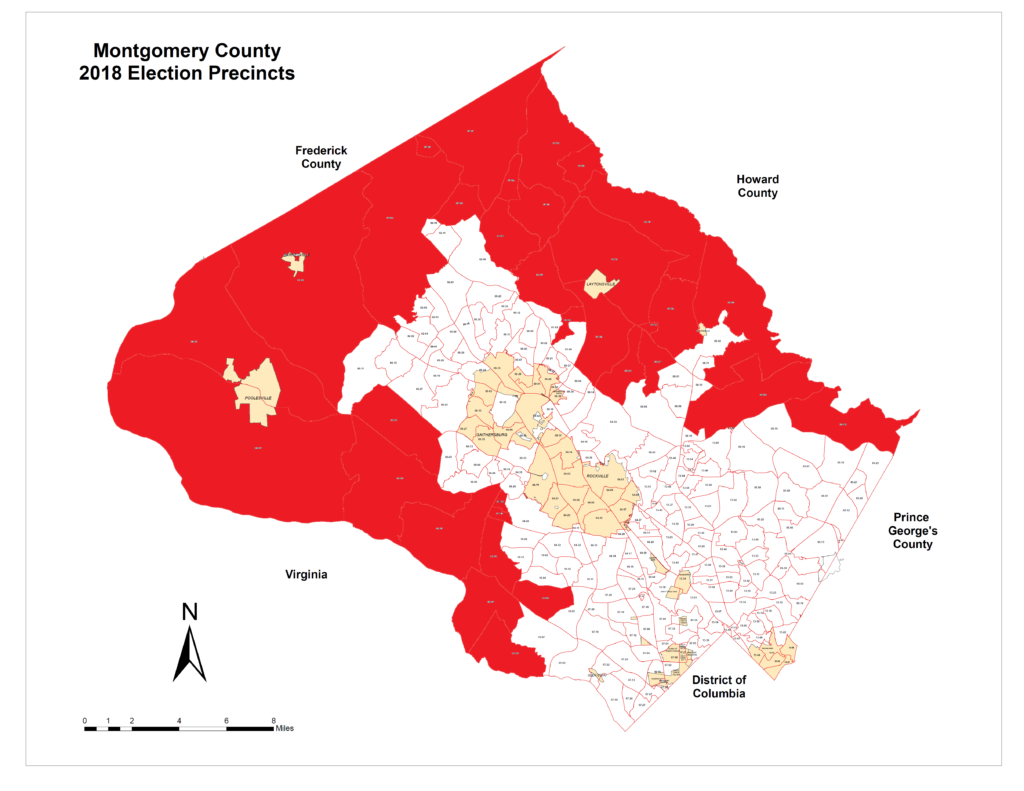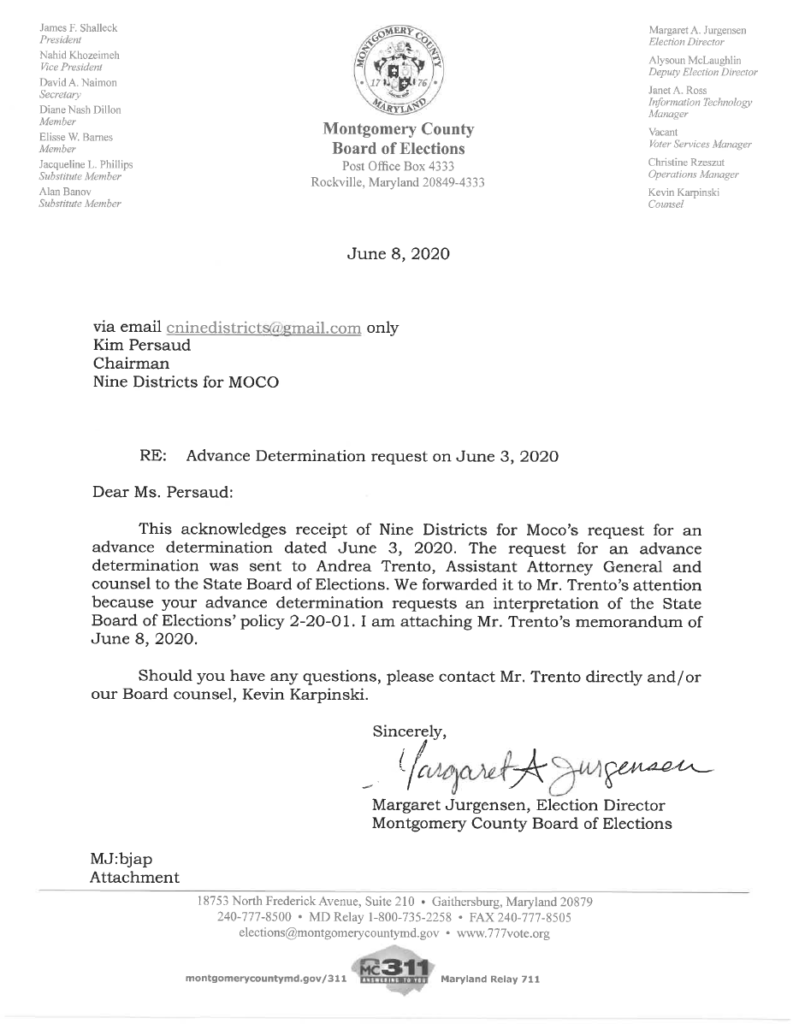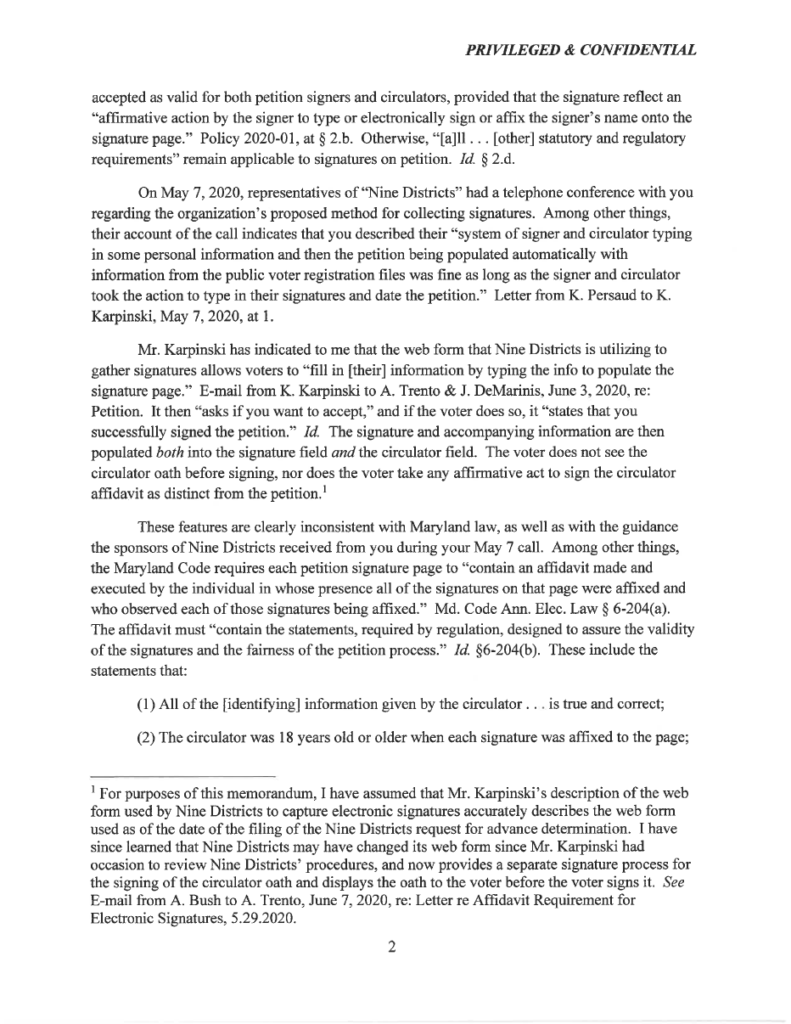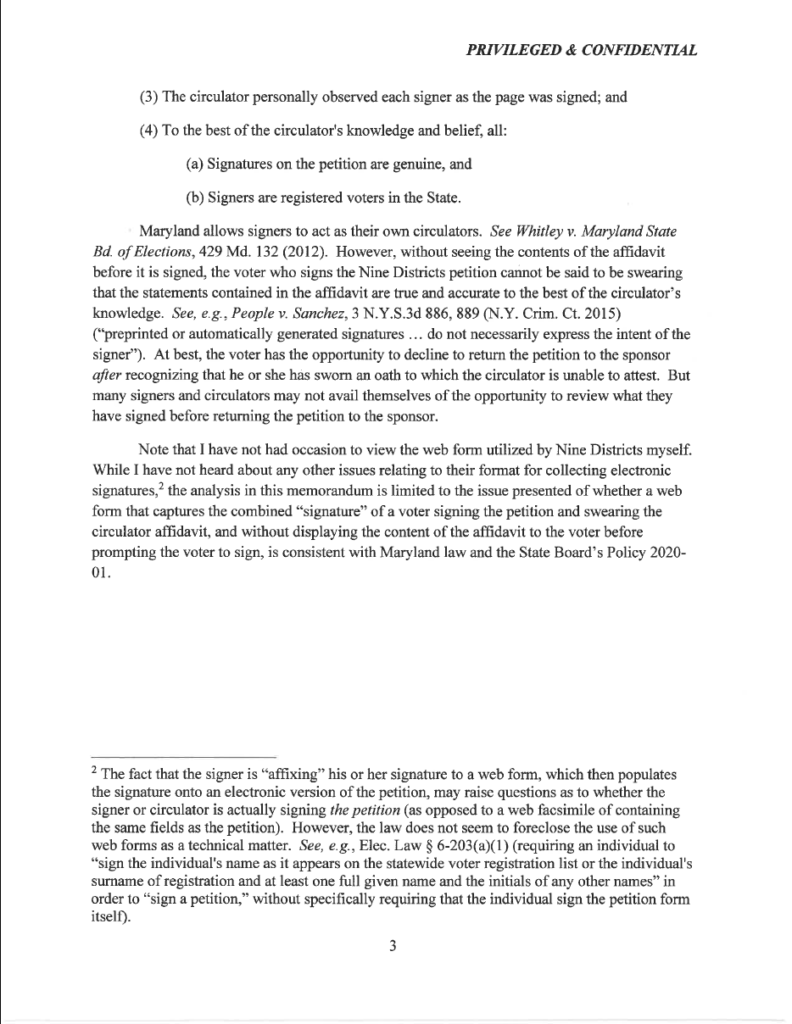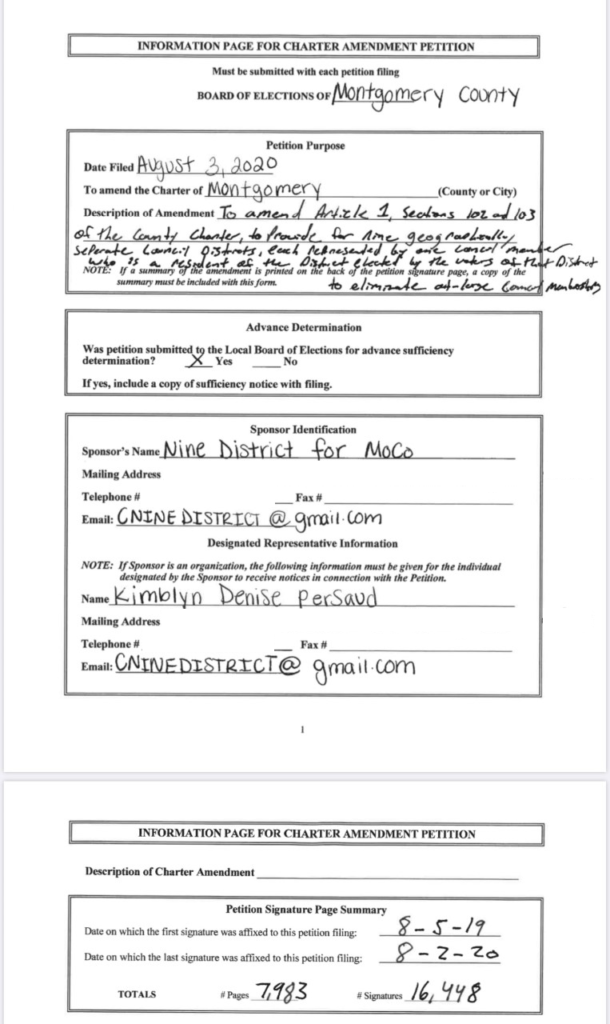By Adam Pagnucco.
In prior posts, I have noted support of the Nine Districts charter amendment by Republicans, developers and unions. But a lot more people beyond those groups would like to have nine council districts and I recently asked them why. Here are a few comments from supporters I received with names removed to protect their identities. I am not saying that they are necessarily right, but in order to understand Nine Districts, you have to understand sentiments like these.
*****
Potomac resident: I support 9 Districts because I don’t feel like my area has adequate representation. I want my representative to live in my area and know the ins and outs of what we need and want. Community leaders should live in their community.
Germantown resident: Taxation without representation. Just like the British thought they were kind and benevolent rulers, the Takoma Park-heavy leadership is similarly clueless about what goes on far away in upcounty. You’ve written about how hard it is to beat incumbents in elections, and I don’t think we will get folks familiar with upcounty without a major structural change like Nine Districts. We can’t get a call back from the at-large members up here, let alone get them to truly understand our issues.
Boyds resident: I have been involved for several years in advocating for upcounty issues and we get lip service (usually no response), but when it comes to voting, at large members just vote with the down county members. So practically speaking down county has eight votes and upcounty has only one, Craig Rice. That’s why one to one is better – total and clear responsibility.
Bethesda resident: We live in a very diverse county. The current structure has ended up concentrating political power down county which results in issues of import to upcounty communities getting short shrift. The current structure has also resulted in a uniformity of political views among our leaders. Even if I tend to agree with the stances of the current leaders on most issues, a more diverse set of viewpoints will be better for our community.
Clarksburg resident: I support 9 districts because Clarksburg constantly gets abused due to lack of political representation. The planning board wants to create a loophole to eliminate home building moratoria so they can keep issuing building permits in Clarksburg regardless of how crowded the schools get.
Montgomery Village resident: I listened to council members that live in Silver Spring and Takoma Park say how much they understand upper county because they came up to rallies or for some other “visit.” I’ve lived in downtown Bethesda (the real one not North) for five years and now in Montgomery Village for four. Two different worlds. Even the produce section of the grocery stores are different. I’m tired of politicians that talk about diversity as their key issue but don’t actually talk about how they can improve opportunities through jobs and new business growth. We’re actively looking to leave the county after this week’s display at the council meeting and BOE.
Olney resident: My experience is that at-large council members are not accountable to anyone. In theory they are accountable to the voters but in practice they are controlled by those who contribute the most to their campaign funds.
North Potomac resident: I have written my at-large “representatives” on several occasions in recent months (along with other council members as well) and the at-large members don’t even bother to send me an acknowledgement of my email. I know some members do send acknowledgements because some have acknowledged emails. There is nothing so frustrating as not only having my concerns ignored, but so flagrantly ignored as not to even acknowledge an email. It’s incredibly arrogant. They clearly don’t represent me and don’t want to. And as a life-long registered Democrat they can’t claim I am not a “constituent.” And even my district Council member doesn’t respond substantively as I assume he has too many constituents to be able to engage with individual constituents.
Gaithersburg resident: I think I support the Nine Districts because it seems to be an improvement – although imperfect – over the present system of “representation.” As a resident of our precious Ag Reserve, I have seen this Council make incursions into the Reserve without (in my opinion) fully researching and considering the effects of their actions on the preservation of farmland and open spaces. Hopefully, the Nine District system of representation would provide a better system for us to make our concerns known. The “At Large” members owe their elections to the highly populated areas, and as such, they can easily discount our concerns. That said, it does depend on the conscientiousness of the particular At Large member. One At Large member did reach out to the upcounty, and met with us at the Damascus Library. I am open to being persuaded to retain the present system but presently am leaning to voting for the Nine District option.
Clarksburg resident: As others are saying – responsiveness and representation. The At-Large system without any balance of geographic residential location leaves hundreds of thousands under- or un-represented. The lone one or two council member(s) who needs multiple at-large members to make change happen is too often left alone on issues. In theory at-large means you have all four of them representing you; in reality, at least in upcounty, we often have none. Zero. And this lack of responsiveness and responsibility can be summarized in one word, which is broad enough for those familiar with recent county history: Clarksburg.

